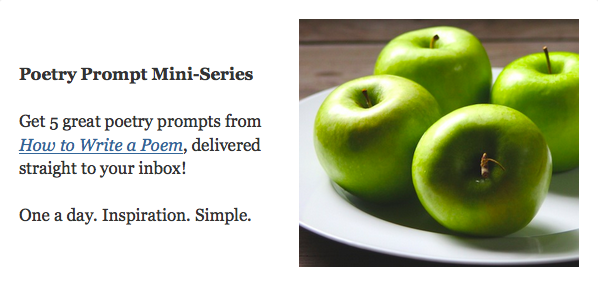
Formal poetry-recitation projects and competitions are important artistic ventures. However, sometimes we just want—or need—to read a poem aloud spontaneously, whether during a class discussion, solo reading time, or Mischief Café.
How can we read a poem aloud in a way that captures its essence?
The following five tips will help you celebrate a poem by reading it aloud with intentionality and confidence. We’ll use Elizabeth Barrett Browning’s “Sonnets from the Portuguese 43, ” one of the most-recited poems, as a model.
Sonnets from the Portuguese 43
How do I love thee? Let me count the ways.
I love thee to the depth and breadth and height
My soul can reach, when feeling out of sight
For the ends of being and ideal grace.
I love thee to the level of every day’s
Most quiet need, by sun and candle-light.
I love thee freely, as men strive for right;
I love thee purely, as they turn from praise.
I love thee with the passion put to use
In my old griefs, and with my childhood’s faith.
I love thee with a love I seemed to lose
With my lost saints. I love thee with the breath,
Smiles, tears, of all my life; and, if God choose,
I shall but love thee better after death.
1) Pay Attention to Lines (But Not Too Much)
When reading poetry aloud, remember, you are dealing partly with lines. Poet David Wright, author of The Small Books of Bach, likens a poetic line to a measure of music. Just as measures in a musical piece flow and connect with one another without jarring separations, so poetry lines keep their shapes, their individual counts.
When reading a poem aloud, think of the end of a line as signaling a slight pause, even if the line ends without punctuation. On the other hand, if you linger too long, you end up with a kind of marching song or limerick effect. Remember, lingering isn’t loitering. What is the impact of letting these lines from Browning’s sonnet linger for just a moment (but not too long)?
I love thee to the depth and breadth and height
I love thee with a love I seemed to lose
2) Pay attention to sentences
One of the top complaints poetry readers receive regards their use of Poet Voice. What is the trademark characteristic of Poet Voice? Reading every sentence, including declaratives, like a question? Perhaps that habit removes emotional depth and variety from a poem?
Paying attention to sentences means paying attention to punctuation. Often, beginning readers of poetry gloss over punctuation, not only employing Poet Voice but ignoring the subtle differences between commas, semicolons, colons, exclamation points, and dashes.
Browning’s sonnet employs the question mark at the beginning, of course, and a semicolon near the end. How might this mid-line break influence a reader’s expression? What would a reader lose if he or she were to treat the semicolon like “just another comma?”
Smiles, tears, of all my life; and, if God choose,
3) Slow down and let the language come alive
Remember, you are reading a poem, not a market report. Don’t think about communicating information, but emotion and story. The poet makes language choices that are as subtle—and powerful—as our own facial expressions and body language. When you come across sound-play in a poem, such as alliteration, internal rhyme or repetition, don’t be afraid to emphasize it. A poem is a very small story, in its way, and your emotional expressions will help tell it.
How can you emphasize, yet vary, the repetition in these lines?
I love thee freely, as men strive for right;
I love thee purely, as they turn from praise.
I love thee with the passion put to use
Click to get FREE 5-Prompt Mini-Series
4) Target a line or two as your “nerve center” for highest expression
Of course every word of a poem deserves careful consideration. But as a reader, you will most likely find a line or two that really resonate with you. Luxuriate over those lines. Slow them down; adjust the volume high or low; pause between words. Don’t hold back.
Consider two of my favorites:
I love thee to the level of every day’s
Most quiet need, by sun and candle-light.
I connect with these two lines because they seem to speak to a long-term, deep relationship. As one who has been married for twenty-one years (and married at twenty-one), I find a gentle, but strong, beauty here. Even without punctuation, I feel the need to focus on “thee” with a slight pause after the word and draw out “every.” I can practically whisper “sun and candle-light, ” mirroring the light’s peaceful flickers.
5) Be human
Remember, you are speaking to people. Even when reading to yourself alone in a room, you’re sharing poetry with a person worthy of your attention. Keep good public speaking practices in mind, such as confident posture and eye contact. If you can prepare beforehand by memorizing an entire poem or at least the beginning of its lines, do so. If you are reading in the moment, still look up from time to time, and don’t worry if it takes you a moment to find your place. If anything, it will help you slow down the language. Enjoy the moment; it is what the poem was written for.
Photo by Justin Faulkner, Creative Commons, via Flickr. 5 Great Tips for Reading Poetry Aloud was originally published at How to Read a Poem and is reprinted here with permission, by Tania Runyan, author of A Thousand Vessels, How to Write a Poem and How to Read a Poem.
___________________________

“I require all our incoming poetry students—in the MFA I direct—to buy and read this book.”
—Jeanetta Calhoun Mish
- Flowers of California: California Poppy - December 8, 2022
- Flowers of California: Lily of the Nile - October 13, 2022
- Flowers of California: Crape Myrtle - October 5, 2022

Rick Maxson says
Great post, Tania! I had trouble reading aloud when I first discovered poetry. What you write here is not only about how to read aloud, but a key to one of the many steps at understanding poetry.
It seems we have to get to know a poem and its line breaks and punctuation before we are successful at audible reading. Your comparison to musical notation is perfect.
For me and many people I knew long ago, it was Franco Zefferelli’s Romeo and Juliet that first made the public aware of how Shakespeare should be spoken (not stirred). Then along came Baz Luhrmann’s very contemporary interpretation, which I thought I would hate, but I loved it! When you say “Be Human” I think that points to how varied a poem can be and yet be true to it’s essence, if only we approach it with our humanness.
I thoroughly enjoyed this essay. Thanks.
Tania Runyan says
Thank you so much, Rick! I’m glad you enjoyed the post, and yes: reading poetry aloud is essential to understanding it. And by the way, I love the Luhrmann version of R&J!
jeanpwebster says
I enjoyed reading this and learnt so much. Thank you.
During this Christmas season I enjoy reading Charles Causley’s The Ballad of the Breadman. The rhythm of ‘Mary stood in the kitchen baking a loaf of bread….’ moves me every time. I like the contemporary feel of it. Children are always fascinated by the poem & it makes a great RE lesson for many age groups. Here endeth the lesson! I just wanted to share it with you because I love it so much.
Now back to ‘How do I love thee?’
Tania Runyan says
Thank you for bringing that poem to my attention, Jean! I hadn’t been familiar with it. It’s quite moving and, yes, has a great rhythm. I’m glad you enjoyed the post!